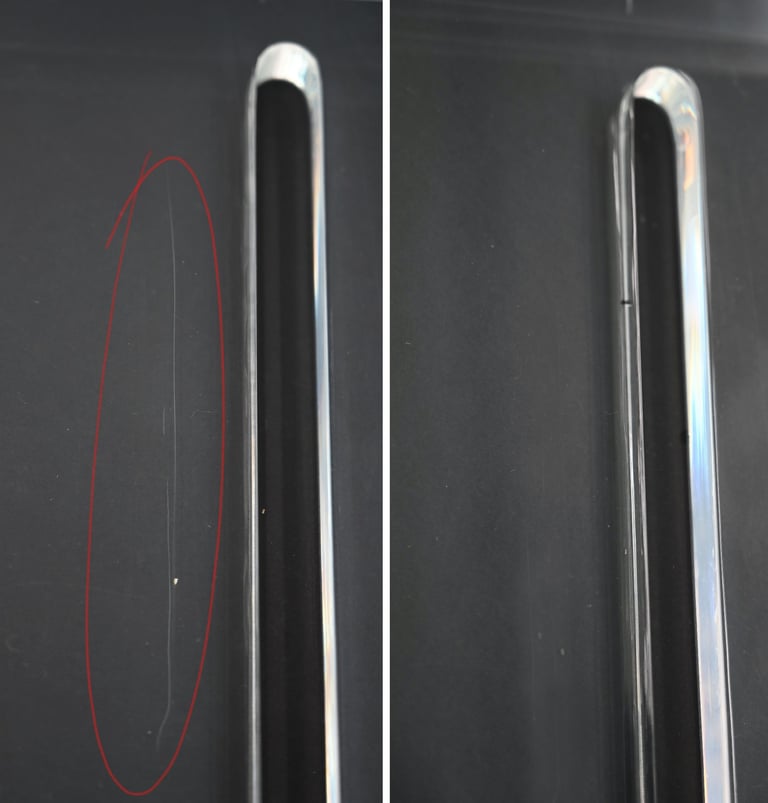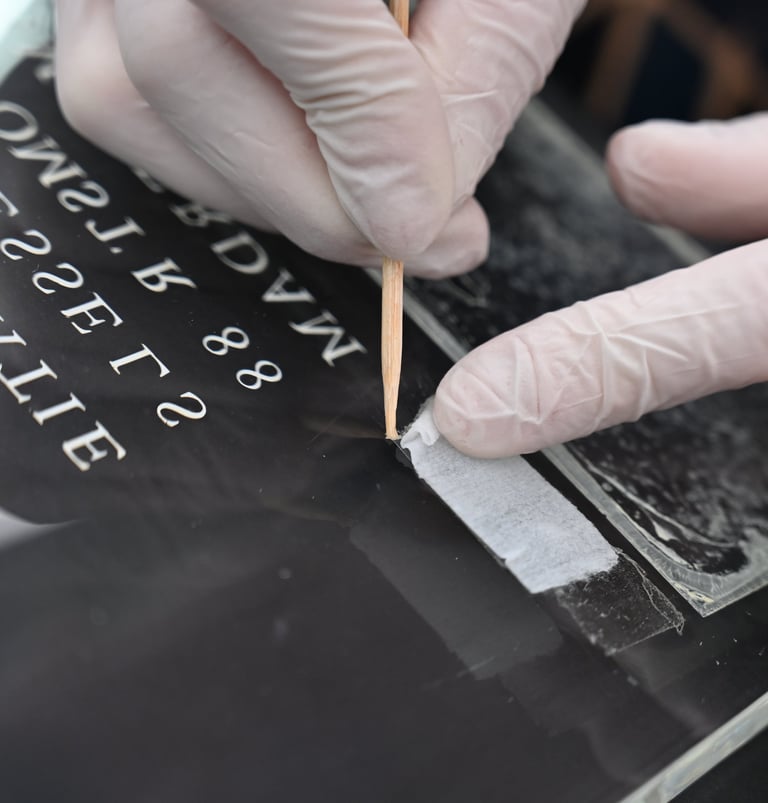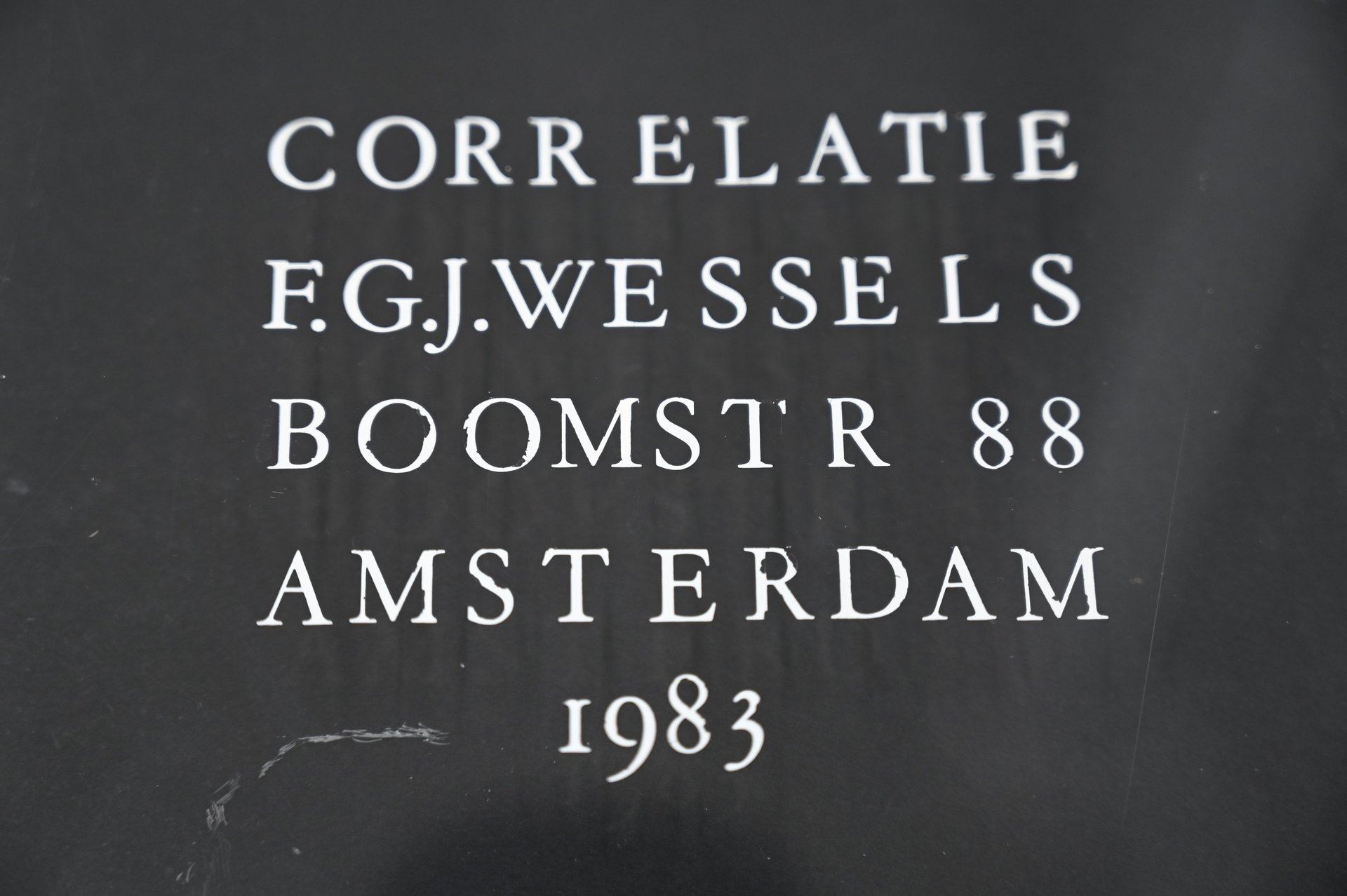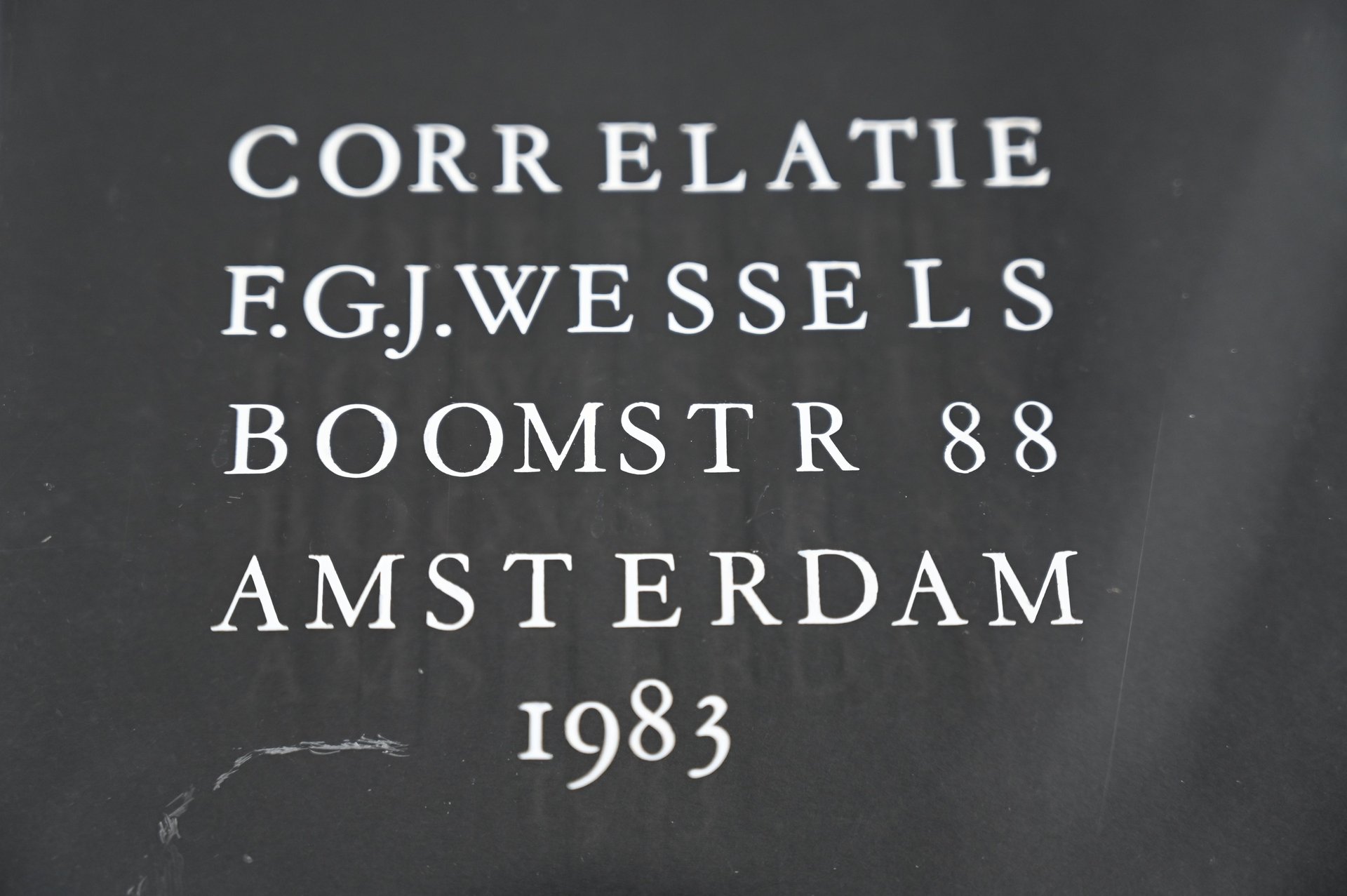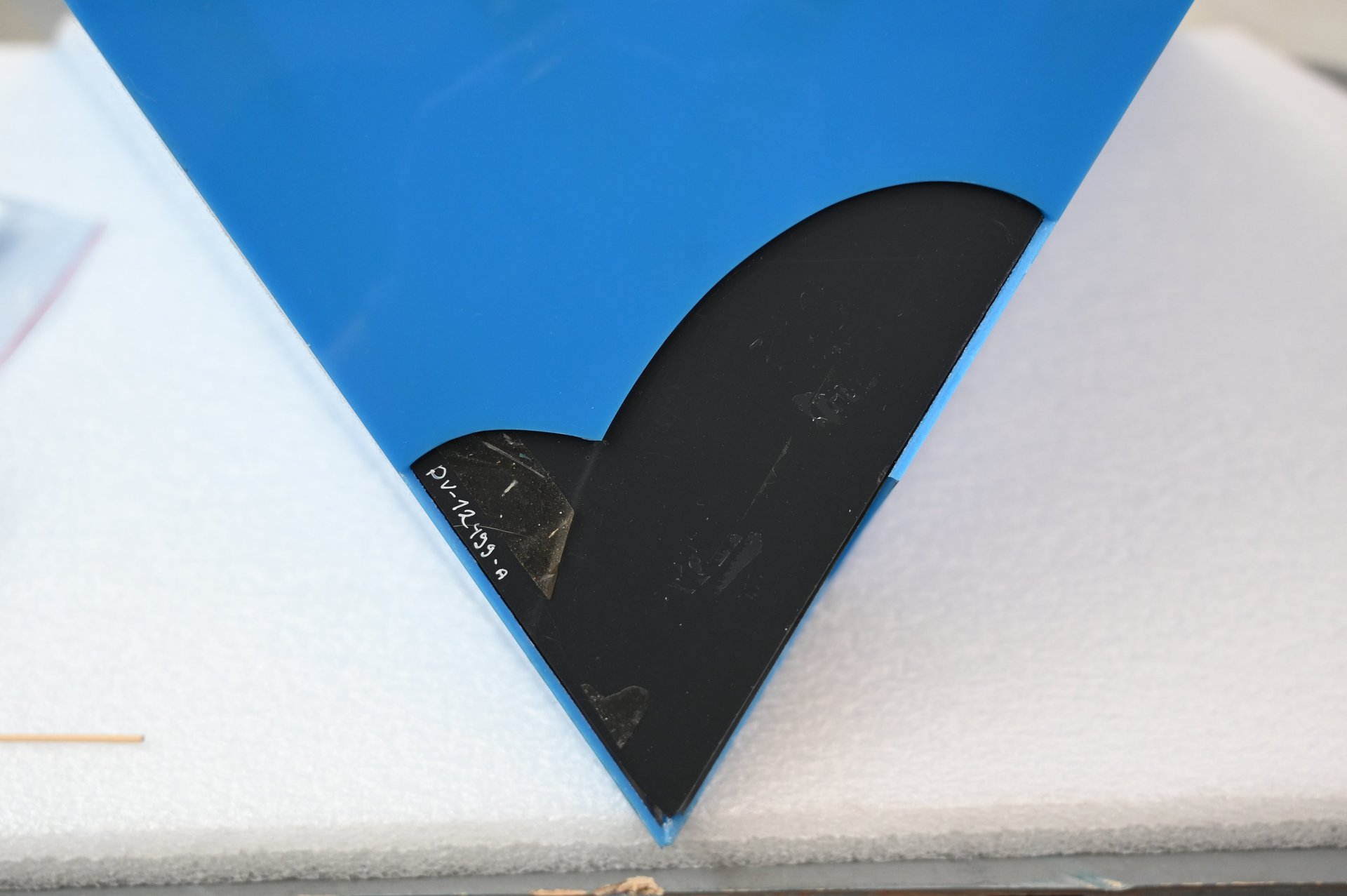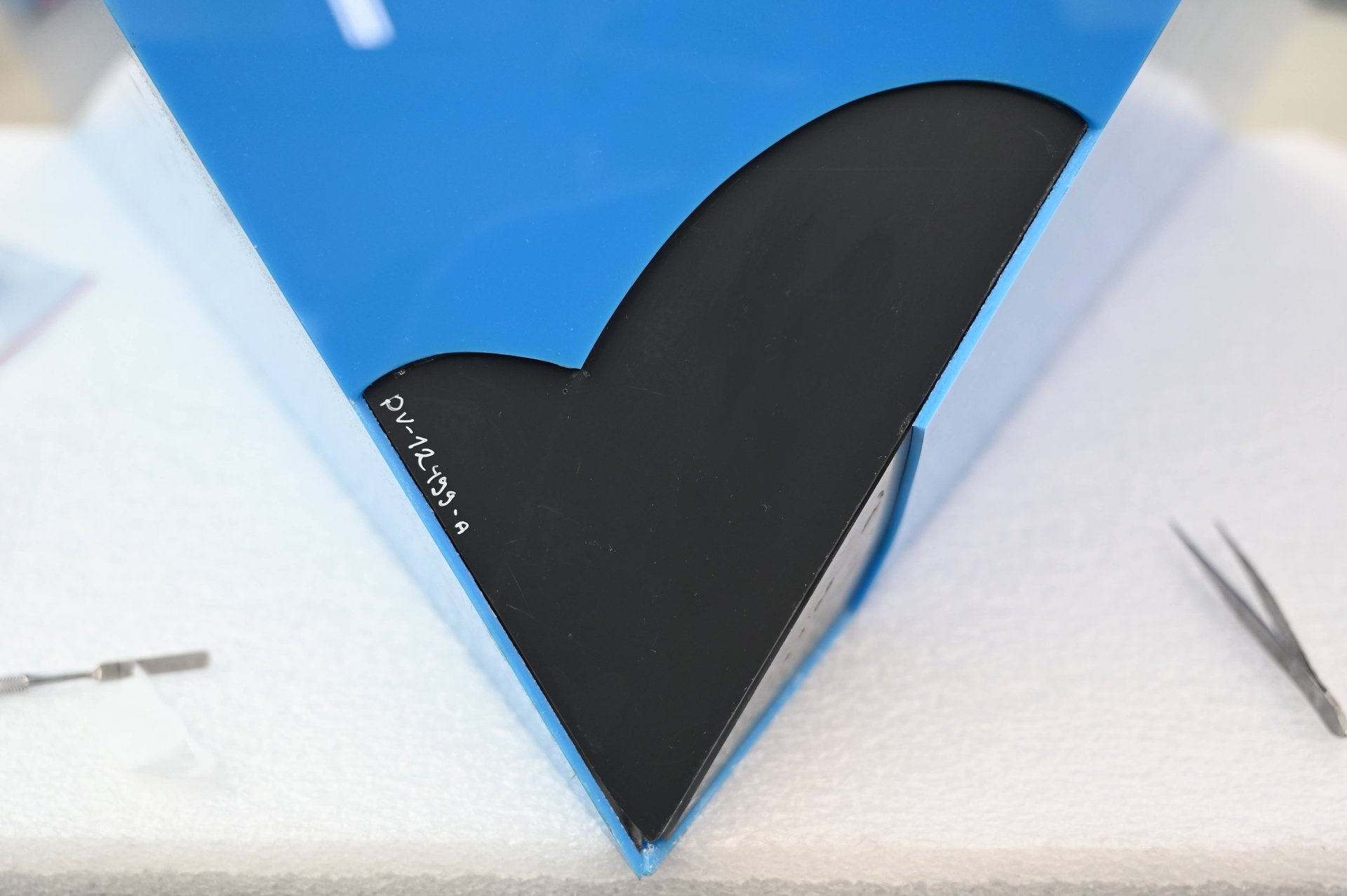PMMA, POLISHING AND CLEANING
Restoration of "Correlatie" by Fred F.G.J. Wessels, PMMA sculpture
This restoration was carried out as part of my work at CollectieCentrum Nederland in Amersfoort.
I D E N T I F I C A T I O N
This sculpture was created in 1983 by Fred F.G.J. Wessels. It is an inverted pyramid made of polymethylmethacrylate (PMMA), also known as Plexiglas®, resting on a base made of the same plastic. Mirrors are attached to the four inner sides.
O B J E C T I V E
PMMA, when not tinted, is aesthetically similar to glass. Therefore, every scratch, dust or stain disturbs the visual unity of the material. For this sculpture, the aim is to reduce the visual impact of the damaged parts as much as possible without removing the historical traces, which are an integral part of the work.
I N T E R V E N T I O N
After cleaning the surface, I set about polishing the scratches on the base and the main face, both of which are made of transparent PMMA. For a scratch about 10 centimetres long, polishing can take up to 45 minutes. The process requires a lot of patience and skill. It regularly happens that a dust or a small particle slips under the Micro-Mesh (sanding cloth) and creates a new small scratch, which must be reduced afterwards.
At the base, a residue of adhesive has been removed from an area of 10 x 15 cm. This adhesive is of unknown origin, but it could be cleaned without leaving any trace on the PMMA, allowing the signature to be seen in full again. Other remnants of adhesive tapes (probably acrylic or solvent glue) were also removed.
Finally, the lettering around the signature was retouched with a water-based paint.
Note: the intellectual rights to the complete artwork remain the full property of the artist. Thus, only photos of the treatment are shown in this article.
